Lexington, KY Pollen and Allergy Report for Summer 2023
Pollen Allergy Trends in Lexington, KY
When is pollen lowest in Lexington, KY?

February
Lowest month total PPM
Avg. PPM
When is pollen highest in Lexington, KY?

April
Highest month total PPM
Avg. PPM
How does pollen in Lexington, KY compare to Kentucky?
Lexington has a higher average PPM than the state of Kentucky.
Lexington yearly avg PPM:
Kentucky yearly avg PPM:
How does pollen in Lexington, KY compare to the USA?
Lexington has a lower average PPM than the USA.
Lexington yearly avg PPM:
USA yearly avg PPM:
Is pollen worse this year in Lexington, KY?
Spring 2023 was worse than spring 2022.
Spring 2023 PPM:
Spring 2022 PPM:
Average PPM in Lexington, KY
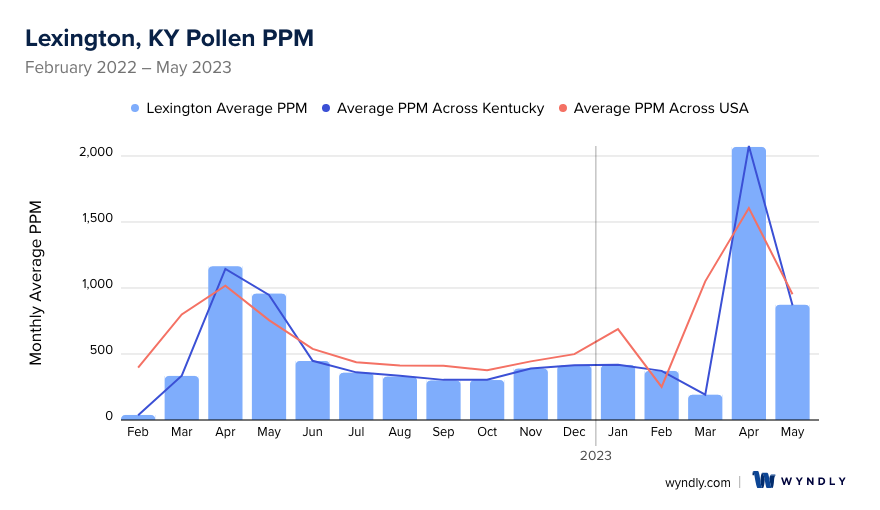
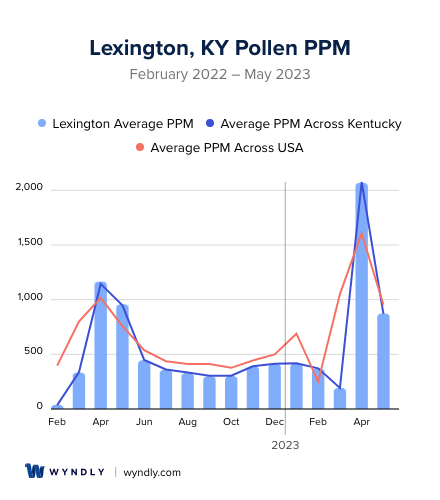
Lexington, KY Pollen and Allergy Breakdown by Month
Grass
When is grass pollen highest in Lexington, KY?
April has the highest grass pollen in Lexington, KY with an average PPM of
When is grass pollen lowest in Lexington, KY?
September has the lowest grass pollen in Lexington, KY with an average PPM of
Tree
When is tree pollen highest in Lexington, KY?
April has the highest tree pollen in Lexington, KY with an average PPM of
When is tree pollen lowest in Lexington, KY?
February has the lowest tree pollen in Lexington, KY with an average PPM of
Weed
When is weed pollen highest in Lexington, KY?
April has the highest weed pollen in Lexington, KY with an average PPM of
When is weed pollen lowest in Lexington, KY?
February has the lowest weed pollen in Lexington, KY with an average PPM of
Lexington, KY Pollen Monthly Breakdown by Pollen Type
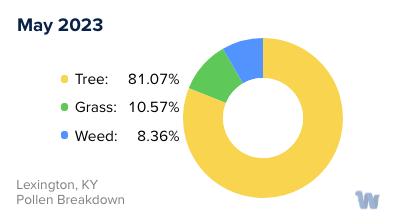
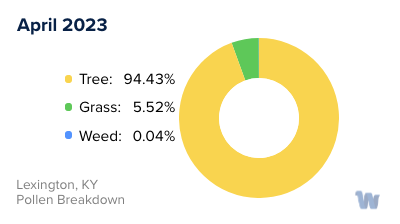
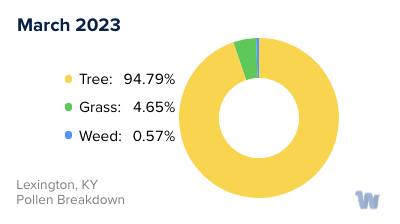
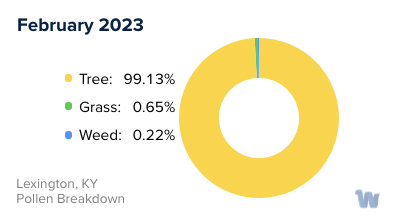
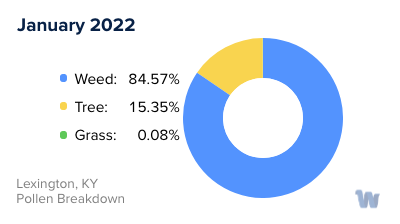
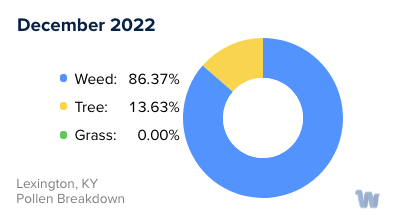
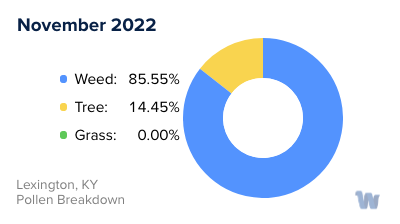
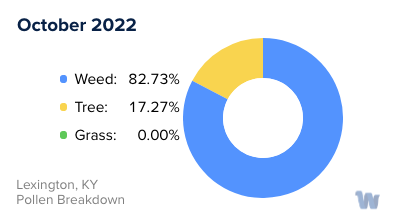
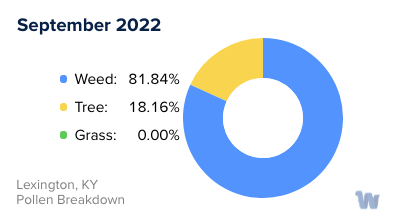
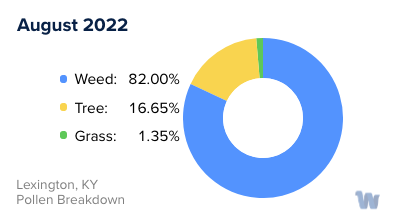
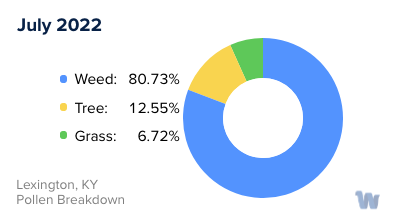
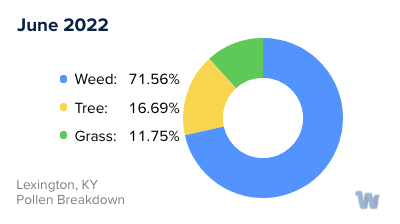
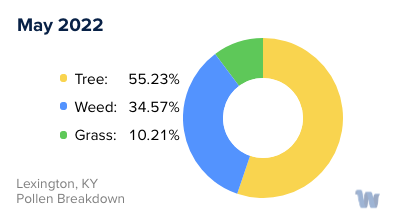
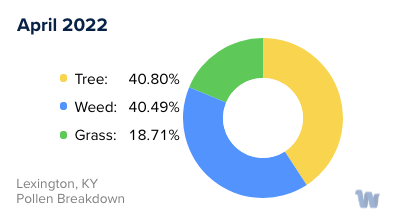
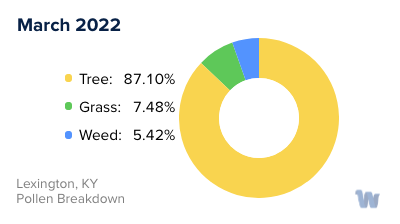
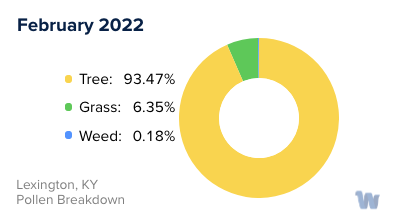
Pollen and Hay Fever in Lexington, KY
Pollen allergies, often referred to as hay fever, are a common concern for the residents of Lexington, Kentucky. The city's diverse flora contributes to high levels of various types of pollen, making it a hotspot for those with sensitivities to these microscopic particles.
The primary pollen offenders in Lexington are tree pollen, grass pollen, and ragweed pollen. Tree pollen typically makes its first appearance in early spring, often causing the initial wave of seasonal allergy symptoms. As the trees begin to bloom, they release their pollen into the air, triggering symptoms in those susceptible. Following the tree pollen season, grass pollen takes the lead. During late spring and early summer, grasses such as ryegrass, fescue, and Kentucky bluegrass, common in the area, release their pollen. Finally, as summer transitions into fall, ragweed pollen emerges as the primary allergen. This three-stage pollen season ensures that Lexington has a continuous pollen presence from early spring through late fall.
Recent research indicates that allergy seasons in Lexington, and indeed across the commonwealth, are starting earlier and lasting longer than in previous years. This change has been attributed to shifts in climate and other environmental factors, leading to a pollen season that is between 11 to 27 days longer each year. As a result, residents are noticing tree pollen as early as late winter, and ragweed pollen can linger until the first hard frosts of late fall.
While pollen allergies can be a significant inconvenience, understanding the types of pollen and their respective seasons can help Lexington residents better anticipate and manage their allergy symptoms.

